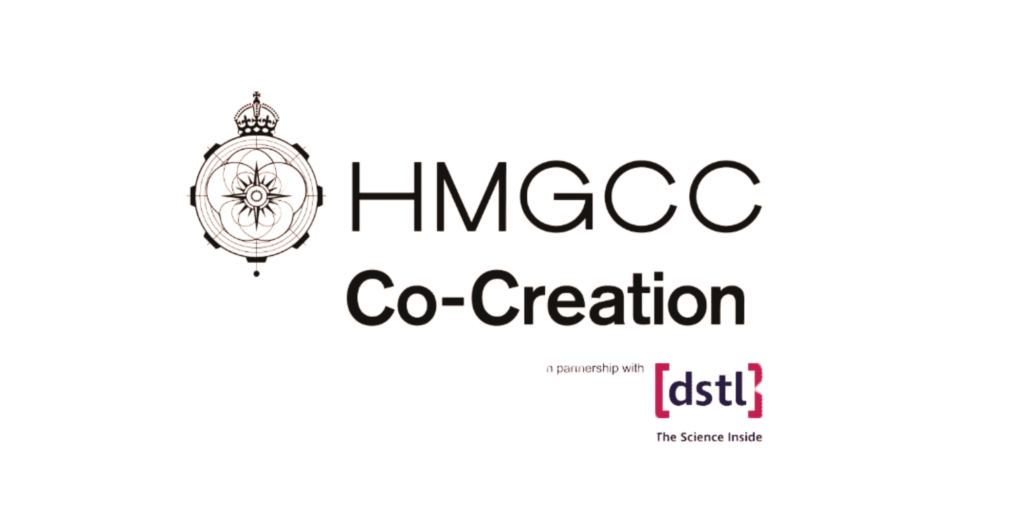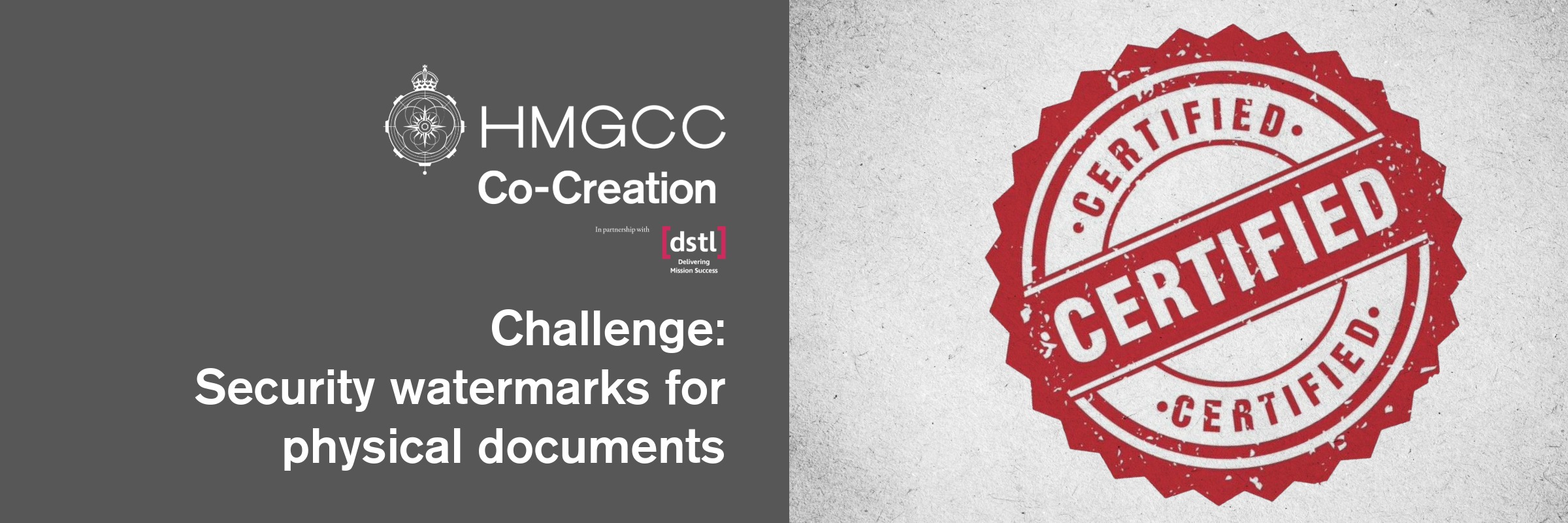
A 12-week challenge has been launched by HMGCC Co-Creation, looking for ways to add bespoke watermarks to physical documents.
The ability to do this without needing large-scale manufacturing runs could prove an important tool in national security, to combat forgery.
Organisations are being invited to apply for this funded challenge to develop new processes and manufacturing concepts, enabling small-scale, agile production runs of security watermarked documents. The goal is to create a flexible and responsive system that can quickly adapt to new security requirements.
HMGCC Co-Creation will provide funding for time, materials, overheads and other indirect expenses for successful applicants.
Technology themes
Engineering design consultancy, facilities, manufacturing, materials science and engineering, model prototyping, systems engineering.
The challenge
Context of the challenge
Watermarks in physical paper documents have been an important security feature for centuries to signify authenticity and discourage counterfeiting. Watermarked documents are ubiquitous, appearing in banknotes, passports, driving licences, certificates, and other official documents handled daily by the public.
However, there are special cases where official paper documents are issued and an agile capability to produce watermarks is essential.
Applicants are also encouraged to identify commercial exploitation opportunities.
The gap
Creation of watermarks involve two primary processes:
- Watermarking during paper manufacturing: Techniques like cylinder mould watermarking, UV-activated threads, and planchettes can be employed. While these methods offer enhanced security, they are complex and require large-scale manufacturing processes.
- Post-processing of prepared paper: A dandy or impression roll is used to emboss a 2D pattern. Although this method is simpler and more common, it is also more vulnerable to replication by counterfeiters.
HMGCC Co-Creation is launching this challenge to gain the best of both processes. By leveraging advanced manufacturing and using innovative methods for producing paper watermarks, it is believed that high precision, consistent and robust security features could be achieved, but in small production runs that are agile so easily changeable.
Example use case
In the event of a disinformation campaign launched by an adversarial group against the UK, the public’s ability to distinguish between genuine and fake information may become compromised. While digital watermarking exists for digital media, physical document watermarking is required to become more agile for this threat.
Production engineer Gwen is tasked with increasing the number of watermarked documents, focusing on smaller production runs of government documents, from low-level public-issued leaflets to official paper documents shared within government. Mass produced documents such as passports, will not be affected by this change.
Gwen needs to cater to diverse customers with varying and bespoke requirements. She needs machinery that can automate the watermarking process, ensuring high precision and repeatability, while also handling diverse document types and quantities.
Project scope
Applicants should aim to deliver a process or manufacturing concept demonstrated in a relevant environment (Technology Readiness Level 5) within this 12-week project. Essential and desirable requirements are listed, along with constraints.
Essential requirements:
- Ability to apply complex watermarks into prepared ‘UV dead’ paper.
- Ability to process batch runs of up to 5,000 sheets of paper.
- A high precision, repeatable process is needed, not requiring artisan skills.
- Ability to easily change for the production of new watermarks at short notice.
Desirable requirements:
- Work on a number of different techniques, de-risk and recommend the most viable process.
- Consider techniques such as embossing, laser ablation, chemical etching, UV fibres, mylar threads, and others.
Constraints:
- It is unlikely that in the short term the sponsors could house new, large and expensive equipment, so low size, weight and power (SWaP) is important.
Key dates
Monday 6th October 2025
Competition opens
Tuesday 21st October 2025
Clarifying questions deadline
Tuesday 28th October 2025
Clarifying questions published
Thursday 6th November 2025 at 5pm
Competition closes
Friday 14th November 2025
Applicant notified
Thursday 20th November 2025
Pitch day in Milton Keynes
Monday 24th November 2025
Pitch day outcome
Thursday 27th November 2025
Commercial onboarding begins*
*Please note, the successful solution provider will be expected to have availability for a one hour onboarding call via MS Teams on the date specified to begin the onboarding/contractual process.
Monday 5th January 2026
Target project kick-off
Eligibility
This challenge is open to sole innovators, industry, academic and research organisations of all types and sizes. There is no requirement for security clearances.
Solution providers or direct collaboration from countries listed by the UK government under trade sanctions and/or arms embargoes, are not eligible for HMGCC Co-Creation challenges.
Clarifying questions
Clarifying questions or general requests for assistance can be submitted directly to cocreation@hmgcc.gov.uk and co-creation@dstl.gov.uk before the deadline with the challenge title as the subject. These clarifying questions may be technical, procedural, or commercial in subject, or anything else where assistance is required. Please note that answered questions will be published to facilitate a fair and open competition.
